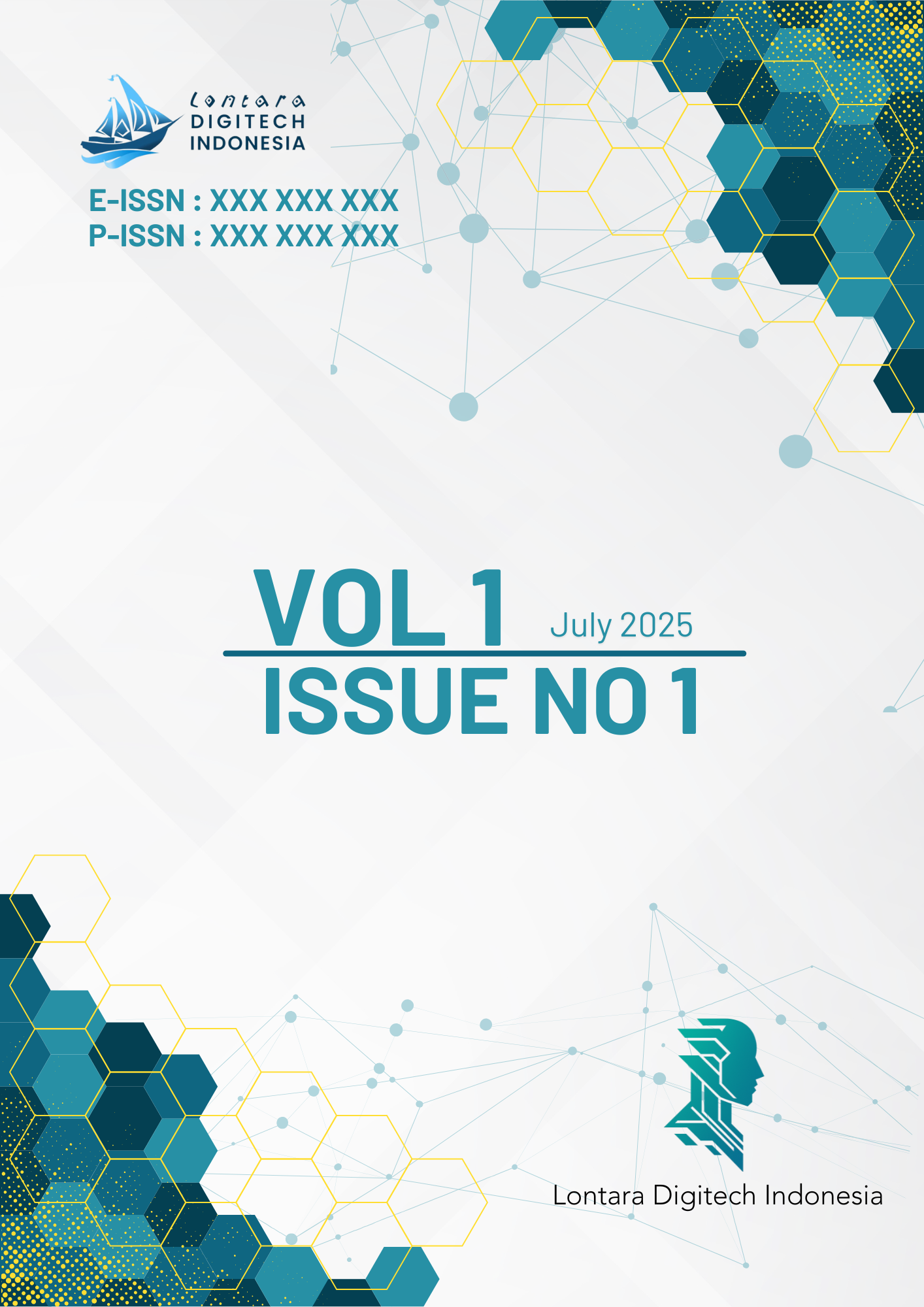Student Perceptions of AI in Learning: The Role of Credibility and Emotional Well-Being in Supporting Critical Thinking Skills
Keywords:
Artificial Intelligence, Critical Thinking, Emotional Well-Being, Perceived Credibility, Student PerceptionAbstract
This study explores university students’ perceptions of artificial intelligence (AI) in enhancing critical thinking skills within higher education. Using a quantitative cross-sectional design, data were collected from 90 Indonesian students who had used AI tools such as ChatGPT or Grammarly in academic contexts. The study examined five independent variables: perceived credibility of AI, AI quality, cognitive absorption, emotional well-being, and user satisfaction, and their relationship to students’ overall perception of AI benefits. Descriptive statistics revealed that students’ perceptions were generally moderate, with emotional well-being and perceived credibility emerging as significant predictors of positive perceptions. Multiple linear regression showed that emotional well-being had the strongest influence, followed by credibility. These findings emphasize the importance of affective experiences and trust in shaping acceptance and effective use of AI in learning. This research contributes to a deeper understanding of how AI integration can support 21st-century skills development, and suggests the need for emotionally engaging and trustworthy AI systems in educational environments
Downloads
References
[1] G. Faraasyatul, B. Budi Wiyono, and A. Mujaidah, “Fahima: Jurnal Pendidikan dan Kajian Keislaman ARTIFICIAL INTELLIGENCE IN EDUCATION WORLD: OPPORTUNITIES, CHAL-LENGES, AND FUTURE RESEARCH RECOMMENDATIONS,” 2024.
[2] K. Umam, H. Khotimah, S. E. Purwanto, E. Azhar, A. Fatayan, and I. Nuriadin, “Augmented Reality dan Artificial Intelegence untuk Pemeblajaran dalam Persepektif Guru Matemat-ika,” JagoMIPA: Jurnal Pendidikan Matematika dan IPA, vol. 4, no. 2, pp. 273–279, Aug. 2024, doi: 10.53299/jagomipa.v4i2.595.
[3] O. Zawacki-Richter, V. I. Marín, M. Bond, and F. Gouverneur, “Systematic review of research on artificial intelligence applications in higher education – where are the educators?,” Dec. 01, 2019, Springer Netherlands. doi: 10.1186/s41239-019-0171-0.
[4] R. Luckin and W. Holmes, “Intelligence Unleashed: An argument for AI in Education,” Feb. 2016.
[5] R. Tariq, A. Mohammed, A. Alshibani, and M. S. Ramírez-Montoya, “Complex artificial intel-ligence models for energy sustainability in educational buildings,” Sci Rep, vol. 14, no. 1, Dec. 2024, doi: 10.1038/s41598-024-65727-5.
[6] G. A. Bazoukis, S. T. Halkidis, E. Pepes, and P. Venardos, “AI in education: Pedagogical and ethical analysis of the implementation of ASSISTments in the school environment,” Euro-pean Journal of Science and Mathematics Education, vol. 12, no. 4, pp. 428–451, Oct. 2024, doi: 10.30935/scimath/14902.
[7] K. Marlin, E. Tantrisna, B. Mardikawati, R. Anggraini, E. Susilawati, and M. Yunus Ba-tusangkar, “Manfaat dan Tantangan Penggunaan Artificial Intelligences (AI) Chat GPT Ter-hadap Proses Pendidikan Etika dan Kompetensi Mahasiswa Di Perguruan Tinggi”.
[8] W. Holmes, M. Bialik, and C. Fadel, “Artificial Intelligence In Education Promises and Impli-cations for Teaching and Learning,” 2019. [Online]. Available: http://bit.ly/AIED-
[9] A. Almufarreh, “Exploring the Potential of Mixed Reality in Enhancing Student Learning Experience and Academic Performance: An Empirical Study,” Systems, 2023, doi: 10.3390/systems11060292.
[10] B. N. Obenza et al., “The Nexus between Cognitive Absorption and AI Literacy of College Students as Moderated by Sex,” American Journal of Smart Technology and Solutions, vol. 3, no. 1, pp. 32–39, Mar. 2024, doi: 10.54536/ajsts.v3i1.2603.
[11] J. M. Cowell, “Publishing Cross-Sectional Studies,” Feb. 01, 2020, SAGE Publications Inc. doi: 10.1177/1059840519896452.
[12] M. J. Zickar and M. G. Keith, “Annual Review of Organizational Psychology and Organiza-tional Behavior Innovations in Sampling: Improving the Appropriateness and Quality of Samples in Organizational Research,” Downloaded from www.annualreviews.org. Guest (guest, vol. 10, p. 43, 2024, doi: 10.1146/annurev-orgpsych-120920.
[13] A. Gogus and Y. Saygin, “Trust in AI-based systems: A review,” Int J Hum Comput Interact, vol. 35, no. 18, pp. 1657–1671, 2019, doi: 10.1080/10447318.2018.1550175.
[14] F. D. Davis, “Perceived Usefulness, Perceived Ease of Use, and User Acceptance of Infor-mation Technology,” MIS Quarterly, vol. 13, no. 3, pp. 319–340, 1989, doi: 10.2307/249008.
[15] R. Mayasari, F. Ramadhani, and H. Latif, “AI-assisted learning in Indonesian higher educa-tion: Ethics and critical thinking impacts,” Asian Journal of Education and Technology, vol. 6, no. 2, pp. 48–59, 2024.
[16] C. P. Lim and T. Wang, “Cognitive engagement and learning with AI-powered tools: Oppor-tunities and challenges,” Comput Educ, vol. 182, p. 104452, 2022, doi: 10.1016/j.compedu.2022.104452.
[17] R. Pekrun, “The control-value theory of achievement emotions,” Educ Psychol Rev, vol. 18, no. 4, pp. 315–341, 2006.
[18] A. Almufarreh, “The role of AI in student satisfaction and learning motivation,” Interna-tional Journal of Educational Technology, vol. 12, no. 1, pp. 34–47, 2024.
[19] A. Almufarreh, “Determinants of Students’ Satisfaction with AI Tools in Education: A PLS-SEM-ANN Approach,” Sustainability (Switzerland) , vol. 16, no. 13, Jul. 2024, doi: 10.3390/su16135354.
[20] J. w Creswell and J. D. Creswell, “Research Design Quanlitative, Quantitative, and Mixed Methods Approaches,” 2018.
[21] M. Sarstedt and E. Mooi, “Regression Analysis,” Springer Texts in Business and Economics, p., 2018, doi: 10.1007/978-3-662-56707-4_7.
[22] T. Cleff, “Regression Analysis,” Applied Statistics and Multivariate Data Analysis for Business and Economics, p., 2019, doi: 10.1007/978-3-030-17767-6_10.
[23] Sugiyono, Metode Penelitian Kuantitatif, Kualitatif, dan R&D. Bandung: Alfabeta, 2017.
[24] D. Robiul, I. Arya, and A. Zakariyya, “MANFAAT KECERDASAN BUATAN UNTUK PENDIDI-KAN,” 2023.
[25] V. Venkatesh and F. D. Davis, “A Theoretical Extension of the Technology Acceptance Mod-el: Four Longitudinal Field Studies,” Manage Sci, vol. 46, no. 2, pp. 186–204, Feb. 2000, doi: 10.1287/mnsc.46.2.186.11926.
[26] R. Luckin and W. Holmes, “Intelligence Unleashed: An argument for AI in Education,” Feb. 2016.
Downloads
Published
Issue
Section
License
Copyright (c) 2025 Ummul Khaeri Masna, Arum Putri Rahayu, Nur Sakina Mawaddah ,Nurrahmah Agusnaya

This work is licensed under a Creative Commons Attribution-ShareAlike 4.0 International License.






